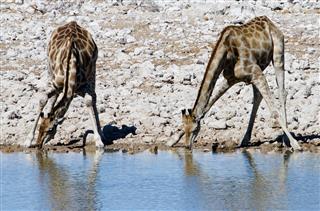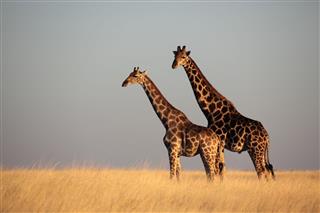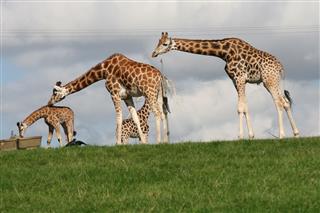
Did you know that the destruction of their native habitat by humans has seriously affected the giraffe population?
At 5.5 meters, the giraffe is no doubt the tallest animal on the Earth. Sadly, that’s exactly where our knowledge about the graceful animal ends. Have you ever wondered why giraffes have such long, spindly legs and a gigantic neck? Leave alone knowing the fact that these are the adaptations that have helped them survive their changing habitat, many people don’t even know that they are only found on the continent of Africa.
Giraffe Range and Habitat
Giraffes (Giraffa camelopardalis) inhabit the savannas and open woodlands of Africa. Their geographical range spans from Chad in north to South Africa in south. While that may seem a vast range for a single species, the fact is that today, they are only found in small pockets in this ‘vast’ area.
If at all, you can find them in the areas covered by Acacia, a kind of spiny tree or shrub, on which they feast. Adult giraffes have about 27-inch long tongue. These mammals love to feed on Baobab leaves as well. With the long neck, long legs, and long tongue, they are able to eat leaves of branches lying at higher level, where other animals cannot reach.
Giraffes live in herds. Considering that a single adult male giraffe needs about 100 pounds of food per day, it is difficult to imagine how much food a herd of 8 – 10 giraffes would require throughout their lifetime? Even more surprising is the fact that they live in grasslands, where trees are scarce, in spite of being armed with all the adaptations that suit feeding on leaves of higher branches.
How Do They Survive Here?
Giraffes spend about 18 hours a day feeding on tree leaves, shrubs, and even grass at times. They mainly feed on the Acacia and Combretum trees, but don’t mind eating the leaves of other trees when they don’t get their favorite food. Half the time, giraffes lower their neck to graze on plants and shrubs below their shoulder level, while the rest of the time their necks are at an angle of 50 to 60 degrees plucking leaves of the trees above their shoulder level.
Their upper lip, and pink and black tongue, help them pluck fresh leaves, delicate shoots, and tasty flowers from trees. Though Acacia tree has thorns, giraffes either exclude them or cover them with leaves and their thick, gluey saliva, so as to ensure that they don’t damage their mouth. A giraffe can store its food in one of the four compartments of its stomach and thus, can survive without food or with minimum food for several days during a drought.
What about Water?
Their huge neck only has 7 vertebrae. The ball and socket joints in the vertebrae and the elastic blood vessels in their neck make it flexible. Bending down to drink water is very difficult for giraffes. Normally, they can see everything within 360 degrees with ease. But when they bend to drink water, they are in an awkward position. At that point of time, they cannot see their predators or poachers (which frequent the area in search of rhinos and elephants) and thus, are vulnerable to them.
Interestingly, they have now adapted to this problem. When they see abundant water, they just gulp it. A giraffe can drink about 10 gallons of water in a minute without choking! And then, it survives without water for several days. For them, the morning dew or the water obtained through leaves is enough for survival. The valves in the veins in their neck ensures that they don’t faint when they bend down to drink water.
Giraffes need a plenty of open space, with trees and shrubs, and a source of water, which makes the savanna grasslands a perfect habitat for them. Humans are encroaching on the grasslands and destroying them. Like we said in the beginning, it is this destruction of habitat that is affecting the giraffe population. We are losing our natural wealth and disturbing the environment, which has already proved to be a reason for extinction of several species … and going by the current trends, the giraffe may as well be the next to go.



























